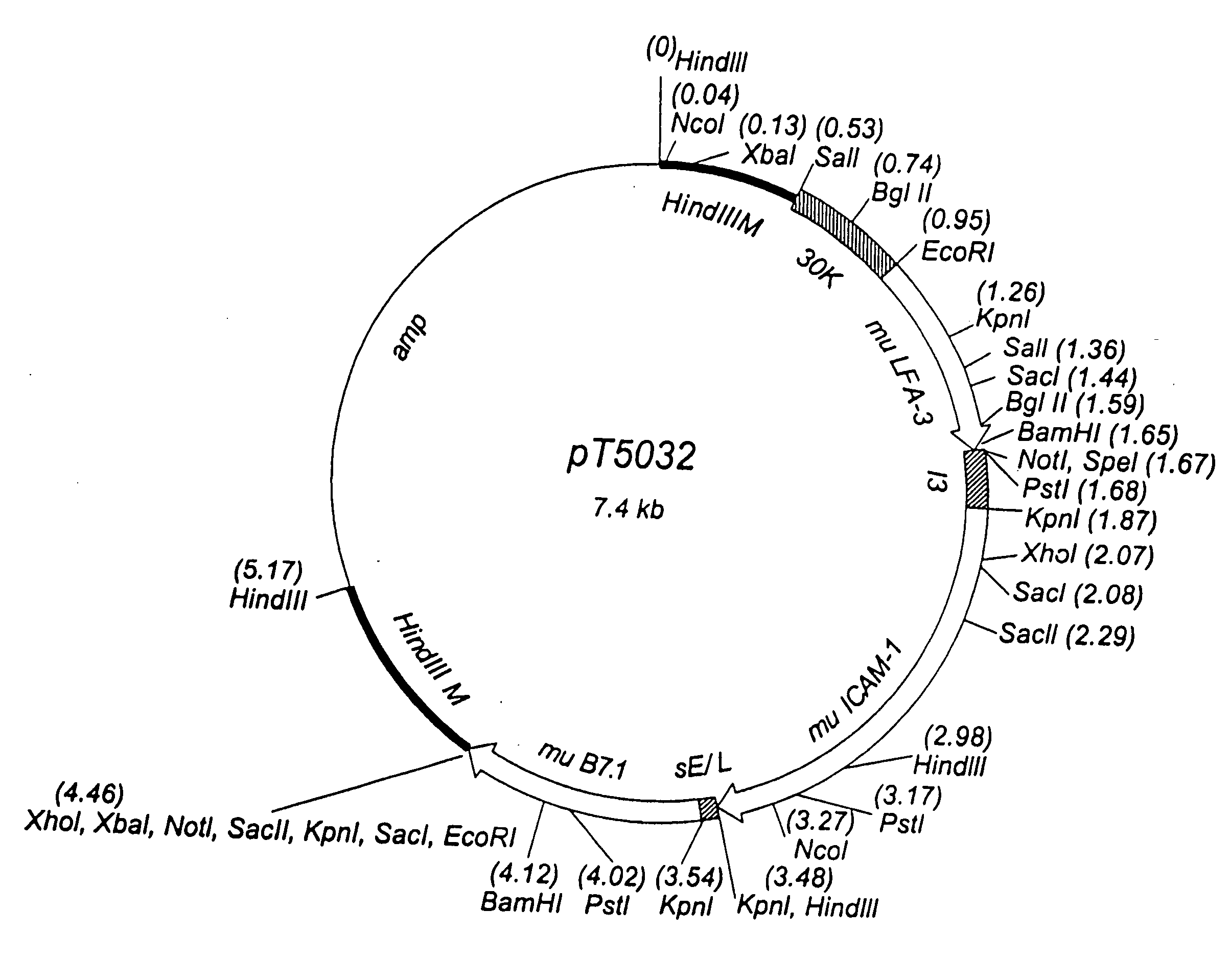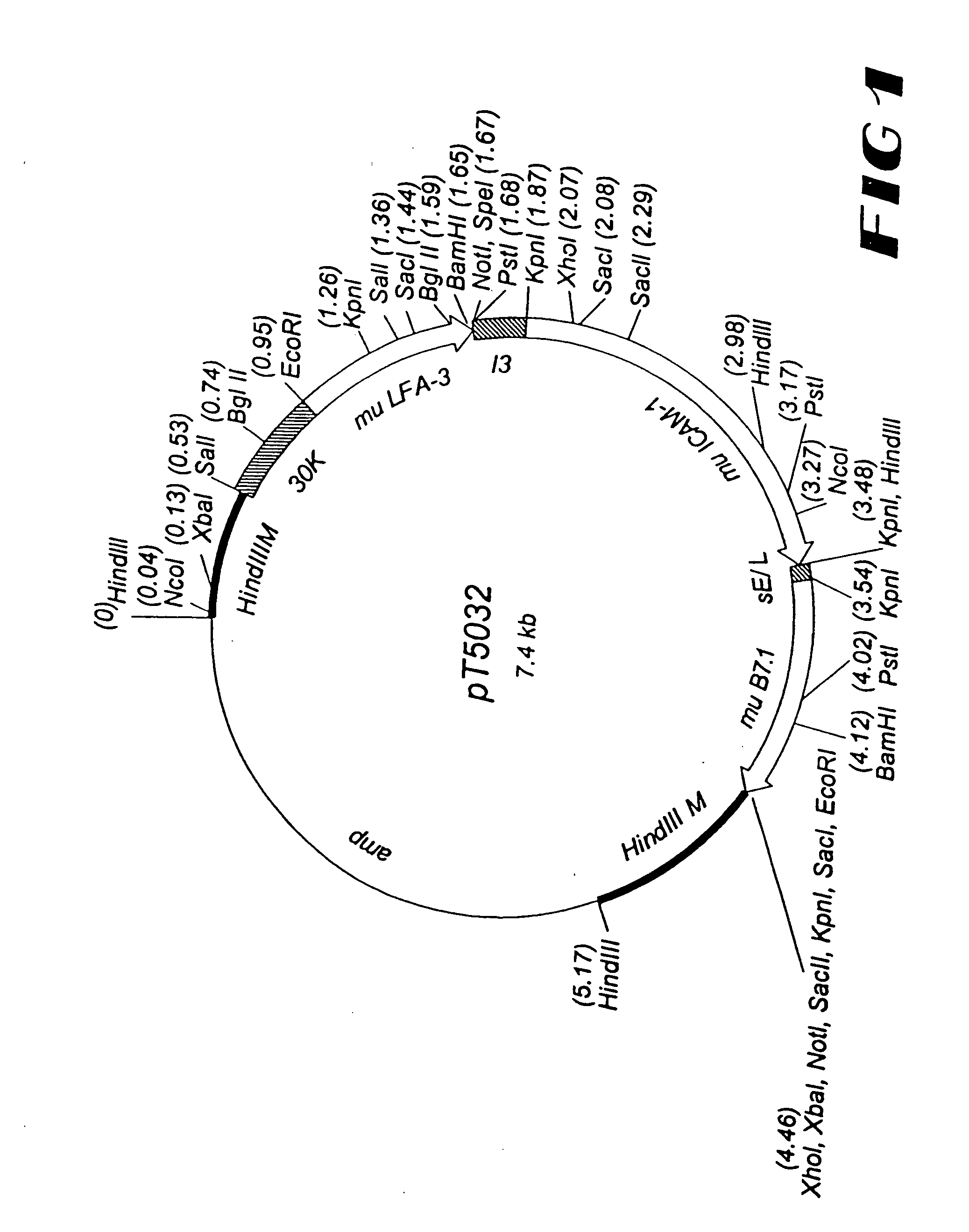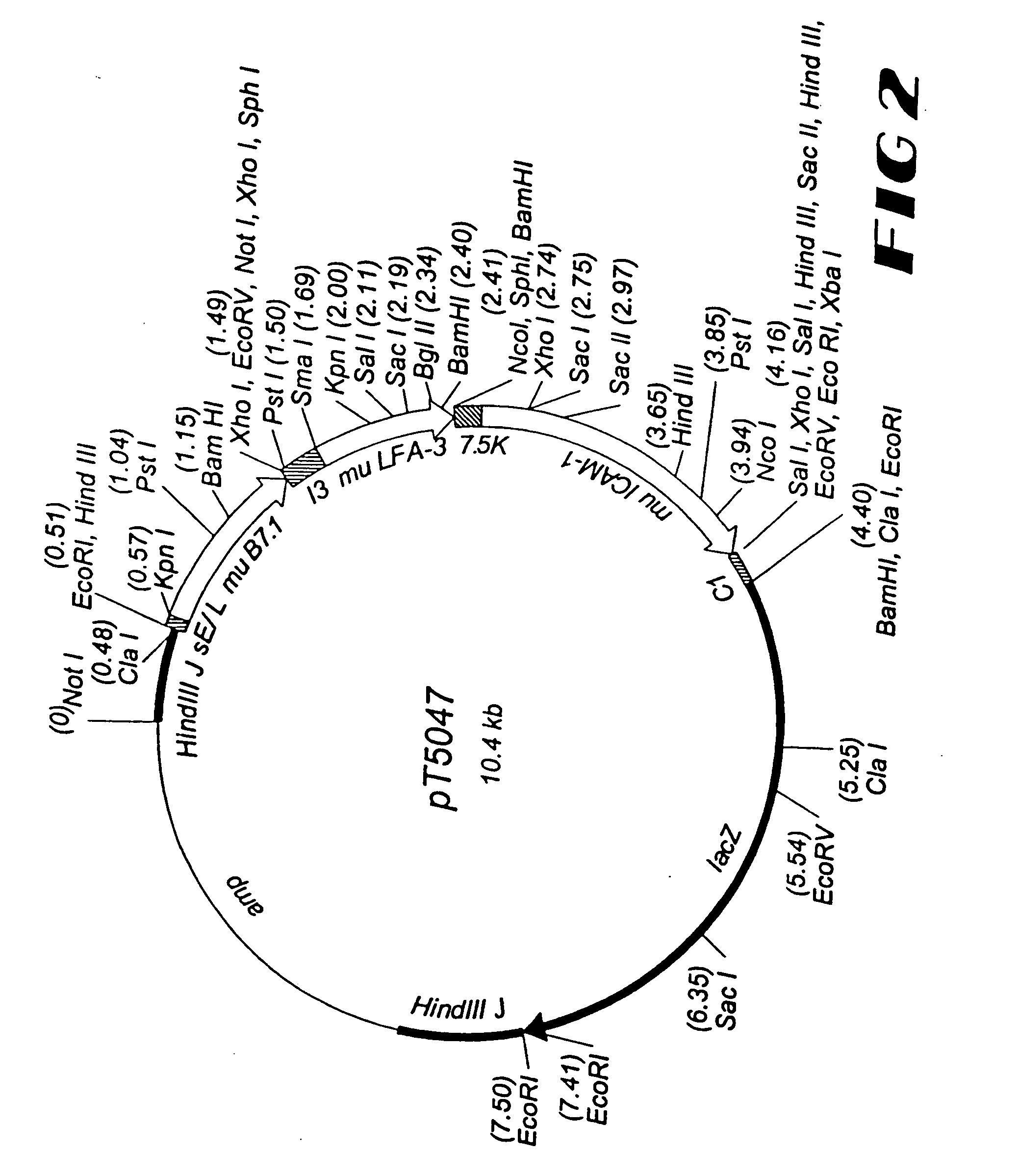Recombinant vector expressing multiple costimulatory molecules and uses thereof
a costimulatory molecule and recombinant technology, applied in the field of recombinant vectors, can solve the problems of difficult to examine the relative potencies of individual costimulatory molecules during the induction of t-cell proliferation, and the statistically diminished probability of co-infecting the same cell by admixture of three or more viruses
- Summary
- Abstract
- Description
- Claims
- Application Information
AI Technical Summary
Benefits of technology
Problems solved by technology
Method used
Image
Examples
example 1
Generation of Recombinant Vaccinia, rV-TRICOM(mu1) No. vT171
[0202]The origin of vaccinia parental virus is the New York City Board of Health strain and was obtained by Wyeth from the New York City Board of Health and passaged in calves to create the Smallpox Vaccine Seed. Flow Laboratories received a lyophilized vial of the Smallpox Vaccine Seed, Lot 3197, Passage 28 from Drs. Chanock and Moss (National Institutes of Health). This seed virus was ether-treated and plaque-purified three times.
[0203]For the generation of rV-TRICOM(mu1), a plasmid vector, designated pT5032 was constructed to direct insertion of the foreign sequences into the M2L (30K) gene, which is located in the Hind III M region of the vaccinia genome. The murine LFA-3 gene is under the transcriptional control of the vaccinia 30K (M2L) promoter (34), the murine ICAM-1 gene is under the control of the vaccinia 13 promoter (18), and the murine B7.1 gene is under the control of the synthetic early / late (sE / L) promoter (...
example 2
Generation of Recombinant Vaccinia, rV-TRICOM(mu2) No. vT199
[0204]For the generation of rV-TRICOM(mu2), a plasmid vector, designated pT5047, was constructed to direct insertion of the foreign sequences into the thymidine kinase (TK) gene, which is located in the Hind III J region of the vaccinia genome. The murine B7.1 gene is under the control of the sE / L promoter, the murine LFA-3 gene is under the transcriptional control of the 13 promoter, and the murine ICAM-1 gene is under the control of the vaccinia 7.5K promoter (39). In addition, the E. coli lacZ gene, under the control of the fowlpox virus C1 promoter (15) is included as a screen for recombinant progeny. These foreign sequences are flanked by DNA sequences from the Hind III J region of the vaccinia genome (see FIG. 2). A plaque-purified isolate from the Wyeth (New York City Board of Health) strain of vaccinia was used as the parental virus for this recombinant vaccine. The generation of recombinant vaccinia virus was accom...
example 3
Generation of Recombinant Vaccinia rV-TAA / TRICOM(mu)
[0205]For the generation of rV-TAA / TRICOM(mu), a plasmid vector is constructed to direct insertion of the foreign sequences into the vaccinia genome. The TAA gene, the murine LFA-3 gene, the murine ICAM-1 gene, and the murine B7.1 gene are under the control of a multiplicity of promoters. These foreign sequences are flanked by DNA sequences from the vaccinia genome, into which the foreign sequences are to be inserted. The generation of recombinant vaccinia virus is accomplished via homologous recombination between vaccinia sequences in the vaccinia genome and the corresponding sequences in the plasmid vector in vaccinia-infected cells transfected with the plasmid vector. Recombinant plaques are picked from the cell monolayer under selective conditions and their progeny are further propagated. Additional rounds of plaque isolation and replating result in the purification of the desired recombinant virus.
PUM
 Login to View More
Login to View More Abstract
Description
Claims
Application Information
 Login to View More
Login to View More - R&D
- Intellectual Property
- Life Sciences
- Materials
- Tech Scout
- Unparalleled Data Quality
- Higher Quality Content
- 60% Fewer Hallucinations
Browse by: Latest US Patents, China's latest patents, Technical Efficacy Thesaurus, Application Domain, Technology Topic, Popular Technical Reports.
© 2025 PatSnap. All rights reserved.Legal|Privacy policy|Modern Slavery Act Transparency Statement|Sitemap|About US| Contact US: help@patsnap.com



